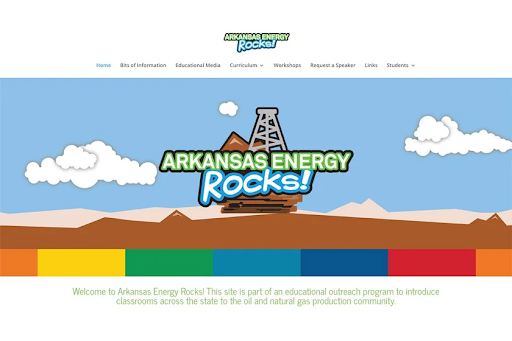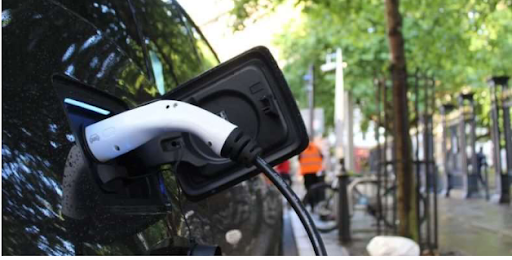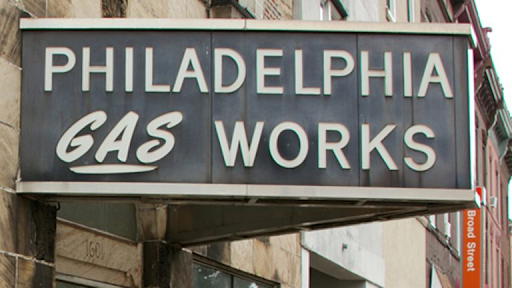
Leone, B., Adams, J., Sarao, M., Rosenthal, A., & Kenner, A. November 2021 Media Brief. Energy in COVID-19. The Energy Vulnerability Project. Platform for Experimental and Collaborative Ethnography.
In a rather consistent thematic, November news has dealt with issues that are either directly or indirectly tied to energy transitions. As discussed in the articles cited henceforth, actions affecting the use and distribution of both fossil fuel and clean energy have taken place this past month. Whether the policy actions will produce positive or negative results is yet to be verified, but many of these articles seem to demonstrate we are moving towards cleaner energy sources day by day.

Worth, K. (2021, Nov 16). How the Oil and Gas Industry Has Broken Climate Education. Slate. https://slate.com/human-interest/2021/11/oil-gas-companies-climate-educa...
First, we should note this very interesting publication “Miseducation: How Climate Change is Taught in America” by Katie Worth. The book discusses the ways in which aggressive capitalist interpretations have seeped their way into climate teachings in the United States (Worth 2021). No short of indoctrination, school teachings about climate indoctrinate young learners to think economic workings depend on the fossil fuel industry (Worth 2021). The states of Kansas, Ohio, Illinois, and Oklahoma actually have state boards funded by oil and gas companies that prescribe educational materials on energy production. More specifically, Oklahoma’s Energy Resources Board (OERB) has already designed lesson plans on the subject and even invites calling for Petro Pros to come speak to classes (Worth 2021). To read more about the ways in which oil and gas companies in the United States, you can read the article here cited for a superficial understanding of the book. In essence, the United States has a long way before it can dismantle its history of capitalist ideological intrusion into climate teachings.

Vaughan, Adam. (2021, Nov 13). “COP26: World agrees to phase out fossil fuel subsidies and reduce coal.” News Scientist. https://www.newscientist.com/article/2297452-cop26-world-agrees-to-phase...
Significant to note is the UN Summit’s agreement to enforce harsher regulations to meet or even surpass 2030 goals for emission reductions plans, a decision that has been agreed by nearly 200 countries at the Summit (Vaughan 2021). While the agreement is an important step taken by signatories, it does not mean we will prevent a 1.5 C rise in temperatures. Nonetheless, the agreement reached the Summit is a sure hopeful action towards more restrictive climate policies, especially seeing the agreement prescribed phasing out fossil fuel subsidies (Vaughan 2021). The questions we should be asking ourselves are: 1) What does this agreement mean for countries on a singular level? 2) How aggressive are governments willing to be to achieve these goals? 3) How effective will we be in reaching 2030 goals? The promises reached on this agreement are significant but irrelevant if necessary actions are not taken. We are seeing a very fragile moment in time, where dangerous climate effects are becoming more and more life devastating and where harsh, efficient, and prompt climate actions need to be taken before the worse of the worse happens.

Lipton, Eric and Dionne Searcey. New York Times. (2021, Nov 26). "How to US lost ground to China in the content for clean energy." Finance and Commerce. Retrieved https://finance-commerce.com/2021/11/how-the-u-s-lost-ground-to-china-in...
In working towards the adoption of renewable energy sources, countries across the globe are looking for ways to secure raw materials needed to produce the machines needed to synthesize raw solar, wind, and water energy. Among these countries are the United States and China, which race each other to secure primary materials such as cobalt (Lipton & Seacey 2021). This article discusses how the United States was outbid by China in the purchase of a Cobalt mine in Congo, despite efforts by local Congolese representatives to push the United States’ purchase of that mine (Lipton & Seacey 2021). The article, while acknowledging the negative implications tied to China’s hold of that mine - i.e. monopoly over the production of renewable energy machinery - does hold a very Western, one-sided perspective of the events, at times even taking forth the very characteristic and long-standing Western savior complex. The article discusses ways in which China would exploit Congo and its mine, without necessarily acknowledging that the United States could very much act in the same way were it in China’s place. There seems to be little regard for locals forced to undertake harsh working conditions or other. Nonetheless, we should acknowledge that a China ‘takeover’ could mean mass production of renewable energy materials, like solar panels, and thus a reduction in overall emissions.
On a more realistic analysis of solar panel production, an article by Iaconangelo (2021), shows how solar panel prices have risen by 50%, essentially jeopardizing many solar projects this year. What does this mean? The rising costs of solar panels essentially threaten a transition to clean energy in the United States, which distances us from many climate goals prescribed internationally. Multiple factors affect this quick price increase, including the increased prices of the raw materials need to produce them and the rising shipping costs following the outbreak of the pandemic (Iaconangelo 2021). The United States’ American Solar Manufacturers Against Chinese Circumvention (A-SMACC) wants to place tariffs on imported solar panels, where Spokespeople for the Solar Energy Industries Association (SEIA) countered saying it is a xenophobic and racist action (Iaconangelo 2021). Here we see a tariff war brewing between the United States and China, perhaps one of the US’ moves to regain its power of the energy industry.

Quinio, V. (2021, July 28). "Air quality future of cities why we need more electric vehicles, but fewer cars, to reach net zero." Centre for Cities. https://www.centreforcities.org/blog/why-we-need-more-electric-vehicles-...
Lastly, what can be lumped into this section is an article on the infrastructure bill and its implications in Philadelphia (Geeting 2021). While the bill is an infrastructure bill and is, thus, more directly addressing issues regarding highways, bridges, local streets, etc., there seems to have been money budgeted for electric vehicle infrastructure (Geeting 2021). To have plans be made for electric vehicle infrastructure means a positive outlook to a city-wide, if not state-wide transition away from fossil-fuel run cars, at the very worst it means there would be more hybrid cars circulating the city (Geeting 2021). Essentially, we are seeing a prospective transition away from the society-wide use of fossil fuels. However, the bill is not a cure-all for the urban issues that exist in the United States, including lacking walkable or bikeable pathways, isolated neighborhoods, etc.
Geeting, Jon. (2021, Nov 23). “What the Infrastructure Bill Means for Philly.” The Philadelphia Citizen. https://thephiladelphiacitizen.org/what-the-infrastructure-bill-means-fo...
Iaconangelo, David. (2021, Nov 1). ”Half of 2022 Utility Solar Projects May Be in Trouble — Report.” E&E News.
Lipton, Eric and Dionne Searcey. New York Times. (2021, Nov 26). "How the US lost ground to China in the content for clean energy." Finance and Commerce. Retrieved https://finance-commerce.com/2021/11/how-the-u-s-lost-ground-to-china-in...
Worth, K. (2021, Nov 16). How the Oil and Gas Industry Has Broken Climate Education. Slate. https://slate.com/human-interest/2021/11/oil-gas-companies-climate-educa...
Vaughan, Adam. (2021, Nov 13). “COP26: World agrees to phase out fossil fuel subsidies and reduce coal.” News Scientist. https://www.newscientist.com/article/2297452-cop26-world-agrees-to-phase...
The November 2021 edition of the Energy Right Project’s media brief covers three themes: Energy Transitions, Energy Expenses, and Energy Insecurities. Under the first theme, our artifacts cover articles ranging from positive actions taken towards more production of clean energy to tariff wars brewing in the green energy sector, as well as infrastructural policies favoring the use of electric vehicles. Artifacts presented under our second theme consider the ways in which energy markets can create new expenses for both utilities and consumers, be it in the form of energy production and distribution, or simply in the concurrent price hikes following the end of pandemic moratoria. Under our final theme, artifacts document how energy regimes can perpetuate vulnerabilities in households and also create supply insecurities that threaten consumer health.

Tiger Williams, Staff Photographer - Maykuth, A. (2021, Nov 28). "Pa. Electricity Prices will Be Rising by As Much as 50% This Week. Here’s How You Can Save." The Philadelphia Inquirer. Retrieved from https://www.inquirer.com/business/peco-ppl-electricity-prices-rates-incr…
In this section, the articles presented show how communities are dependent and affected by energy prices. Some might even say the ever-changing nature of energy prices, specifically the stark prices that have followed the pandemic, create a condition of energy insecurity for many households. In a heartwarming policy move, the White House is dispensing more money for people who are struggling or will struggle with their winter heating (Boak 2021). While expanding LIHEAP is a great move for families who face difficulties paying their bills, better marketing of the LIHEAP availability would also help serve the portions of Americans who do not receive their annual LIHEAP budgeting. An even more effective policy would be an expansion of the income guidelines, to serve the working poor who are perpetually excluded from energy assistance and other forms of assistance.
As more money is dispensed for LIHEAP, Pennsylvania residents will see a stark rise in their utility bills (Maykuth 2021). Even with energy assistance, vulnerable households might be thrust into more debt than they are already carrying. With the inevitable rise of the Pennsylvania utility bills, the article proposes some actions consumers can take to lower their consumption and, thus, their energy prices (Maykuth 2021). Despite the effectiveness of these suggestions, consumers will inevitably notice and feel the price hikes and will likely feel its repercussions on their monthly budgeting. These increases will inevitably make life unaffordable for households already struggling with their day-to-day expenses.
In the midst of actions taken that inevitably affect the working poor, Massachusetts is among the few to prioritize underserved communities (Shemkus 2021). With their efficiency plans, Massachusetts is funding a system to increase outreach to underserved communities, included but not limited to efficiency programs and paying utilities to provide services in these communities (Shumkus 2021). These programs range from no-cost insulation to heating systems, meant to serve low-income households, but also recently expanded to moderate-income households (Shumkus 2021). However, the article does not that there are still households that are excluded by these programs due to their income.
Continuing with the theme of energy expenses, the US’ Energy Information Administration (EIA) documented an increase (or rather recovery) of the oil prices since the beginning of the pandemic, whilst at the same time predicting a drop for crude oil prices for 2022 since demand and production will naturally readjust to accommodate each other (EIA 2021). Whether or not such decline will be immediately felt is to be seen, but these changes are sure to affect consumers in both the transport and household sectors.
Boak, Josh. (2021, Nov 18). "White House Offering More Aid for Winter Heat, Utility Bills." AP News. Retrieved from https://apnews.com/article/business-gene-sperling-1d6a0239664feee3a66141
EIA. This Week in Petroleum. https://www.eia.gov/petroleum/weekly/
Maykuth, A. (2021, Nov 28). "Pa. Electricity Prices will Be Rising by As Much as 50% This Week. Here’s How You Can Save." The Philadelphia Inquirer. Retrieved from https://www.inquirer.com/business/peco-ppl-electricity-prices-rates-incr…
Shemkus, Sarah. (2021, Nov 29). “Massachusetts’ New Efficiency Plan Puts a Priority on Underserved Communities.” Energy News Network. https://energynews.us/2021/11/29/massachusetts-new-efficiency-plan-puts-...

Nathaniel Hamilton from Phillips, Susan. (2021, Nov 4). "PGW emails show involvement in drafting bill that runs counter to climate goals." WHYY. Retrieved from https://whyy.org/articles/pgw-emails-show-involvement-in-drafting-bill-t...
The third and final theme this month spearheads discussions on insecurities consumers experience as tied to utilities. The first article presented in this section discusses a long-standing issue in water supplies in Pennsylvania, but that could virtually be traced across every state. A sub-committee of Pennsylvania’s EPA has proposed a rule to decrease substances in state water supplies that do not break down in human bodies, nor in the environment (Kummer 2021). The proposed legislation would demand at most 14 parts per trillion for PFOAs and 18 parts per trillion for PFOS of these substances in the water supply, a harsher measure than what is prescribed federally since both substances’ limits are set at 80 parts per trillion (Kummer 2021). The Biden administration is also looking to establish enforceable standards to decontaminate water supplies, but it won’t be complete until 2023. This article shows how, as water consumers, we are at risk of adverse health effects simply by having water supplies in our homes.
Continuing the discussion on consumers’ vulnerability to utilities and their establishments, this article discusses how PGW is trying to run counter on legislation that would slowly reduce and eventually phase out gas (Phillips 2021). The article, here, suggests PGW is trying to continue its lobby for gas to be used in homes (Phillips 2021). Overall, it should be noted that consumers are vulnerable to decisions taken by the utilities supplying them and political figures representing them. Gas stoves, heating, and appliances should slowly be phased out because they produce respiratory ailments that are damaging to whoever comes into contact with them (Phillips 2021).
Consumers are also made vulnerable by the utilities’ desire to maintain a monopoly over their services. In this article Maykuth (2021) discusses the monopoly PGW and Vicinity Energy hold in the heating sector (Maykuth 2021). This monopoly has been a longstanding controversy and has been a small player in Philly’s energy ecosystem. The article points to the massive power differentials between PGW and other stakeholders in Philadelphia and makes us question how vulnerable consumers are in their choice of provider.

Retrieved from North American Electric Reliability Corp..
In addition to being vulnerable to utility monopolies, consumers are also susceptible to grid vulnerabilities. According to NERC, this coming winter consumers could experience threats to their power supply due to inclement weather (Walton 2021). Following the Texas blackouts, NERC changed their grid operating system evaluations to include both measures of grid capacity and ability to withstand extreme weather conditions (Walton 2021). This evaluation revealed regions where extreme weather is more likely to occur (drought, snow, hurricanes, etc.) or where generators could be severely impacted to be at more risk of losing their supplies (Walton 2021). Texas has voted to have utilities weatherize their generators and transmissions providers in order to avoid a deadly repeat of this past year. Overall, the foregoing is yet another example of how consumers might be vulnerable to utilities’ energy governance.
Consumers face vulnerability also simply by the location in which they live. This article is actually an interview that brings awareness to issues long faced by black people and people of color in Appalachia (Kowalski 2021). The activist group Black Appalachian Coalition is trying to voice concerns on the issues black people and people of color face with regards to pollution, access to basic needs and resources, etc. in the region (Kowalski 2021). The insecurities are the result of long-standing policies that disregarded vulnerabilities faced by the communities. In response, Black Appalachian Coalition hopes to inform and create a better-targeted policy by asking the community what they need, not what is thought to be needed.
For the last article in this section, we can look to positive changes in the ways in which climate change is discussed. The article is the second article collected for this month that discusses how the COP26 climate summit called by the United Nations, actually centered the discussions of climate change through a public health lense (Winston 2021). Why is this significant? It is significant because it is the first time since the summit’s first meeting in 1992 that climate change was thought of as a health issue (Winston 2021). If the pandemic was not an indicator, the COP26 took time to focus on adverse health effects climate change poses to us both directly and indirectly. Moving forward, humans’ well-being across the globe rests on how seriously we take rising temperatures, growing food scarcity, diminishing water quality, extreme weather events, and even increased frequency of diseases outbursts (Winston 2021). Overall, the more we continue to rely on fossil fuel for energy production, the more we increase our own vulnerabilities to disease.
Choi-Schagrin, Winston. (2021, Nov 4). “Efforts to reframe Climate Change as a Health Crisis Gains Steam.” The New York Times. Retrieved from https://www.nytimes.com/2021/11/04/climate/public-health-climate-change.html
Kowalski, Kathiann M. (2021, Nov 12). "Black Appalachian Coalition aims to shift the narrative on energy, other issues." Energy News Network. Retrieved from https://energynews.us/2021/11/12/black-appalachian-coalition-aims-to-shi...
Kummer, Frank. (2021, Nov 16). “Pennsylvania DEP Proposes Strict Limits for ‘Forever Chemicals’ in Drinking Water.” The Philadelphia Inquirer. https://www.inquirer.com/science/climate/pennsylvania-dep-pfos-pfoa-standards-20211116.html.
Maykuth, Andrew. (2021, Nov 1). "Philly steam-loop owner accuses city's gas utility of 'predatory, anti-competitive' conduct." Philadelphia Inquirer. Retrieved from https://www.inquirer.com/business/energy/philadelphia-steam-pgw-rates-pe...
Phillips, Susan. (2021, Nov 4). "PGW emails show involvement in drafting bill that runs counter to climate goals." WHYY. Retrieved from https://whyy.org/articles/pgw-emails-show-involvement-in-drafting-bill-t...
Walton, Robert. (2021, Nov 19). “Extreme Weather, Low Hydro and Fuel Shortages Could Threaten Grid in Multiple Regions this Winter: NERC.” https://www.utilitydive.com/news/extreme-weather-low-hydro-and-fuel-shor...